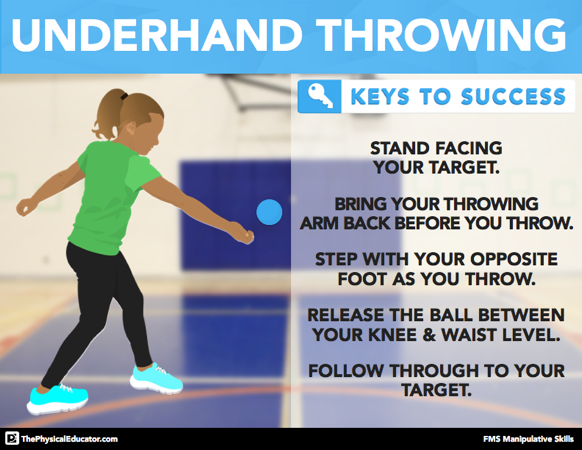
Remind children to be cautious when moving, and to be aware of personal space. Practice throwing both overhand and underhand at the targets.Inspect activity area for safe traction and eliminate potential hazards. If you like you can assign points values to each target. Stick them to the wall at various heights. Use coloured paper cut into different shapes, or, if you’re feeling really fancy, print out some graphics, whether it’s hearts and stars or Paw Patrol characters. Use a big ball for kiddos around three who are throwing with two hands, and a smaller ball around age 4 when they’re starting to throw with one hand. Don’t have bean bags? Put some dried beans or rice into a sock and tie a knot in it, or use a ziplock.

They’re easy for preschoolers to grip on to. Have one of these popular baby balls at home? Tie a string on it, and hang it up for your kiddo to stop with their body or trap with their hands!īalloons are another great tool for toddlers, because again, they move slowly and don’t hurt if they hit your face! Toss a balloon to you toddler and have them give it a big hug to trap it against their body! Throwing and Catching Activities for Preschoolers and Up What types of balls?īean bags are great to start with. Bubbles move slowly, so they’re easier to catch, and they don’t bonk you in the nose! Try poking with one finger, trapping between two hands, running after them blowing away in the breeze…

Throwing and Catching Activities for Babies and Toddlers Bubble Popįrom a really young age bubbles are a great way to work on eye tracking and early hand eye coordination. Ever thought about how when you throw a ball down to the floor, you have to rotate your hand around to catch it in your upturned hand? This is a great age to start working on those hand orientation skills. A great skill to work on at this age is bounce and catch, whether against the floor or the wall. We’re working on throwing and catching with two hands, as well as with both the left and right hands separately. Kids at this age are beginning to refine their catching-rather than hugging the ball to their body, we’re working on making cup hands to receive the ball.Īnd at age 7 and up, kiddos are working on twisting their body, transferring their weight as they move through the action, and following through. We’re working on swinging the arm back for an underhand toss, and learning about where the optimum point is to let go of the ball. Next, around age 5 and 6, we’ve started to gain more of an ability to aim the ball where we want it.

You might also see your kiddo dropping the ball behind them when doing an overhead throw! At this age, kiddos are more stopping the ball with their body than actually catching it, though they’ll be starting to trap the ball to their chest with both hands.
#Underhand throw kid how to#
They also aren’t quite developmentally ready to understand how to throw the ball farther. Kids in this age range haven’t yet developed the ability to aim their ball they’re just throwing, with no real direction in mind.

#Underhand throw kid plus#
Did you catch Coach Darsh’s instagram live with Physio Lexy from Kids Physio last week? He was talking all about throwing and catching! We chatted with Darsh to get his most important highlights from that talk, plus some great ideas of activities you can try at home to develop your kiddo’s throwing and catching skills! What Does Throwing and Catching look like at different ages?Īround age 3, we’re starting with two handed throws, progressing to one handed throws around age 4.


 0 kommentar(er)
0 kommentar(er)
